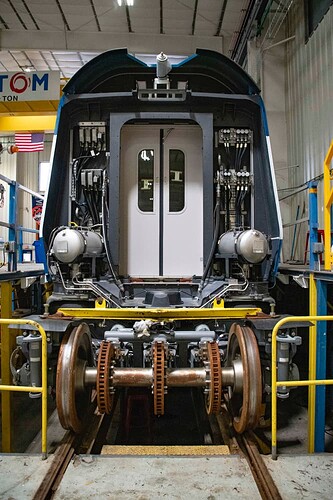Found a new GO effective August 2025 showing the new Acela 2 speeds. Note that they are temporarily running under column B due to restrictions on the tilting speeds which are lower than the speeds on curves allowed for Acela 1 speeds.
Hopefully this is a temp issue, which accounts for the slower running times at the moment.
Alstom says it tweaked the design to meet Tier 3 requirements, which ultimately affected the trains’ performance during extensive testing. That, in turn, prompted additional minor modifications to the equipment, including dampers on the suspension of the trains’ power cars, an independent source tells Trains.
Further complicating matters: The new trains ride on a TGV wheel profile, which is different from any other Amtrak equipment. The Northeast Corridor, Jagodzinski points out, includes significant mileage shared with freight and commuter traffic, which raises tonnage beyond what TGVs experience on dedicated high speed tracks in France.
So, it seems to be a vehicle dynamics issue. As of now, the tilt mechanism is essentially useless, as the trains aren’t even allowed to match the first gen Acela performance on curves. If after four years of delays they haven’t gotten this worked out, I have to wonder if Amtrak is just giving up and accepting the possibility that the trains will never operate as intended. I certainly hope not. That ugly mismatch between power cars and coaches needs to be justified somehow!
The Acela 2 like all French trains use a cylindrical wheel rather than a conical wheel. The Amtrak Turboliners back in the day did too. As did all locos on the Santa Fe including Amtrak’s SDP40Fs. They hunt less at speed.
The North Shore back in the 20s started this. Santa Fe copied. Then the French. Interestingly the CTA still uses cylindrical today.
The Japanese use 1:100 on their Shinkansens which is nearly cylindrical. They started with I think 1:30 and had bad hunting.
Typical low speed trains are 1:20 to 1:40. I’ve not ridden the Acelas 1st or 2nd gens but I’ve ridden the NEC regionals a fair amount. I wouldn’t compare the NEC to either Japan or France in terms of smooth track.
https://dn721508.ca.archive.org/0/items … -19SUM.pdf
